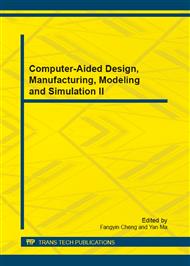p.413
p.418
p.423
p.428
p.433
p.441
p.446
p.451
p.456
Combining a Radial Basis Function Neural Network with Improved Genetical Gorithm for Vulcanizing Process Parameter Optimization
Abstract:
Vulcanization is one of the important processes to manufacture water-lubricated metal rubber bearing. Since the vulcanizing quality of the bearing is mostly influenced by process prameters, how to determine the optimal process prameters becomes the key to improving the part quality. In this paper, a combining RBF artificial neural network with improved genetic algorithm method is developed to optimize the vulcanizing process. The result shows that the combining ANN/GA method is an effective tool for the process optimization, comparing with the Taguchi DOE technique, overall performance of the bearing has significantly improved under the optimal process parameters.
Info:
Periodical:
Pages:
433-437
Citation:
Online since:
December 2012
Authors:
Price:
Сopyright:
© 2013 Trans Tech Publications Ltd. All Rights Reserved
Share:
Citation:


